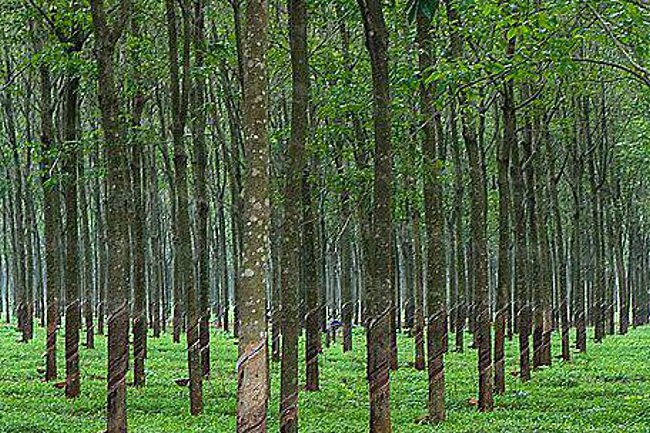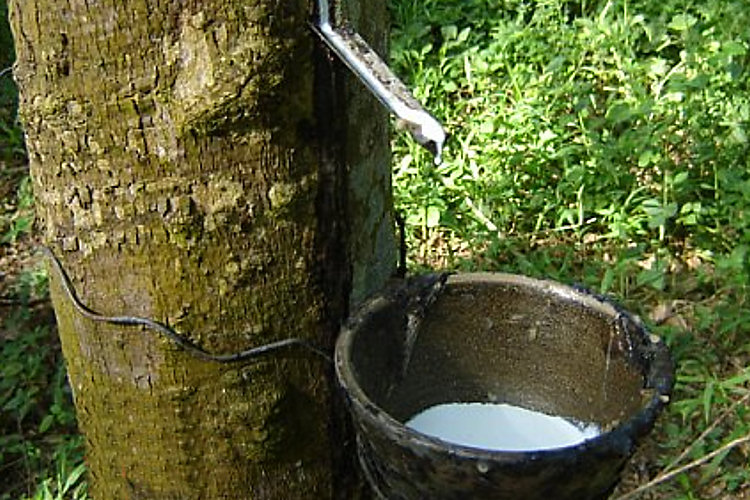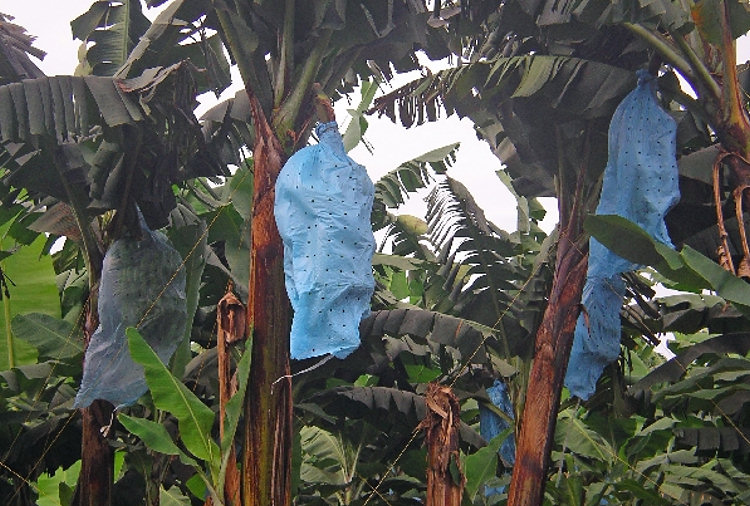Galle to Colombo Journey
The newly built Colombo to Mantra Southern Express Freeway is a toll road. It is a two lane motorway that is nearly empty of traffic. The locals cannot afford to use it. It will link up with the new city, port and international airport being built not far from Galle with foreign money.

Rubber tree plantations can be seen along the side of the Mantra Southern Express Freeway in Sri Lanka
There is a 100kmph (60mph) speed limit. It cuts through forests of rubber plantations and areas of rice cultivation. You will also be able to see banana and coconut plantations. Surprisingly you will also see fields of tea bushes planted underneath the shade of large trees. These plants normally like the colder climate of the central hills, not the hot humidity of the coastal planes.
You may also notice that in the banana plantations the banana that are still growing on the trees have been put in bags. This is to protect them from damaged caused by nibbling nocturnal fruit bats. The northern Express Freeway is currently under construction north of Colombo

The white latex milky liquid is natural india rubber produced in Sri Lanka
Rubber Production in Sri Lanka
Natural rubber is made by collecting a milky liquid called 'latex' from rubber trees. The mature rubber tree's bark is cut diagonally and a bucket is strapped to the tree to collect the white sap. This is called 'tapping'. The liquid latex is refined into a usable rubber. It is naturally very flexible and waterproof. It was given the name 'rubber' because in 1770 it was noticed that the substance was extremely good and rubbing off pencil marks off paper.
Rubber trees were first found in South America. A British explorer called Sir Henry Alexander Wickham collected over 70,000 Para Rubber Tree seeds and in 1876 shipped them back to Kew Gardens in London. They were cultivated and more seeds obtained. These were then sent to various tropical countries in the British Empire. This included Sri Lanka (Ceylon). The British merchants started work constructing rubber plantations on a grand scale. The rubber tree thrived because natural South American rubber tree predators and diseases were not present.

To protect the Sri Lankan banana crop from fruit bats the bunches are put into bags to ripen
It takes 7 years for the rubber tree to become mature enough to produce latex. It then has a further economic life of 25 years. The trees require well-drained fertile soil with a hot wet tropical climate. The tappers cut the tree park in the morning and then go and have a meal. In the afternoon they come back and collect the white latex from the collecting cups. The latex seeps for about four hours before the bark wound is sealed by coagulation. Collecting rubber latex is a very labour intensive process that cannot be mechanised.
Travel books

